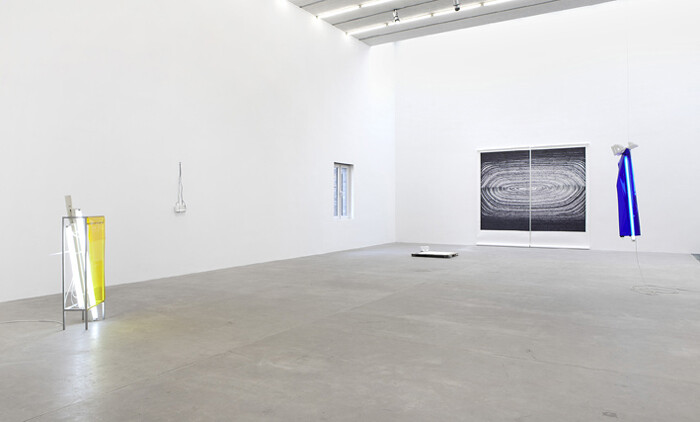It is an inexorable fact that every work of art is a response in some form. Irish artist Brendan Earley has created works in response to Beijing, where he was an artist-in-residence at Galerie Urs Meile last year. One might hazard the suggestion that Beijing is a city that is particularly difficult to elucidate. Its traffic, human and mechanical; layers of habitation—frequently temporary but sheltered from the uncomfortable climate by rapid-set concrete; endless breakage, dirt, and repair; consumption and competition; fragments sculpted into language and undivided skies of blue or grey revolving between day and neon-infected night above altering horizons. It is a city that incites one to operate rather than contemplate.
This might be one description of the place Earley entered with the express awareness that cities penetrate the consciousness of their inhabitants until they themselves are assimilated into the urban fabric as “fractional embodiments” of it. In what is a notably cogent exhibition text, he acknowledges a shift by which humans no longer adapt to their habitat, but change it to suit to themselves. Yet in Beijing, the environment is such that people are forced to adapt: these artworks reflect on that reconciliation, standing somewhat tentatively amidst an accelerated and saturated city.
Earley is focused on form, or rather its “cavity,” as a way of comprehending urban structure; its liminal stages are examined here mainly through drawing. Felt-tip marks accumulate relentlessly in I Wait for Sleep #1 and #2 (all works 2012). What becomes an architecture of little vertical lines in these works ascends towards lighter registers of ink, implying the entrance of light through an opening, perhaps of a dome; a single circular hole cut bravely in each sheet of paper from which the marks flee in their furtive, mimetic legion “reinforces the absence,” or so the artist tells us in his statement. A palpable sense of abstract endeavor informs the works (Earley was heavily jetlagged when composing them), which is not to deny their wrought tension, as the method of application remains deliriously unbroken over thousands of strokes. A third, larger felt-tip work lends its title to the exhibition as a whole, In the Midnight City. Here, the lines assume a flattened circular pattern decreasing towards the center in an at once seething and languid vortex shape.
On the concrete floor is a carefully assembled, sparse arrangement of sculptures; non-invasive, but at the same time slightly isolating. In place of the physical presence one usually expects from sculpture is a sensation closer to hearing, as if a low hum were emanating from somewhere. That said, the most memorable amongst them—Day for Night and Midnight Man—have a vaguely anthropomorphic character where supports pushing up from the floor hold fluorescent tubes in a vertical arrangement cloaked in blue filter paper. Midnight Man is the more untidy of the two, with an electrical cable hanging down. The artist seems unconcerned by this, however, lending a state of slight unevenness or fragility to the work. These sculptures might be also likened to candles or torches; one is then led to ask, in a more metaphorical vein, what they might serve to illuminate? Compelling though they might be, however, they are also remarkably neutral.
Such is the shape of Earley’s response to Beijing—profoundly elusive and fragmented. On the one hand, one has a lasting impression of a duality between the erratic pen strokes and the cool assemblage of fragile lights and brittle colored sheets. A certain sublimity permeates the show, along with a sense of refinement divorced from the cacophony of the city—especially the migrant village area where the artist was living during the residency. But perhaps in his pursuit of “absence” these works indicate a form of withdrawal from this great urban mass. The artist certainly has applied himself intensely in creating these dense drawings and highly formal sculptures, which in their final turn hit a sense of the infinite—or of want. Such a state might also mimic the individual’s passage through a contemporary megacity, oscillating between harried engagement and escape.







